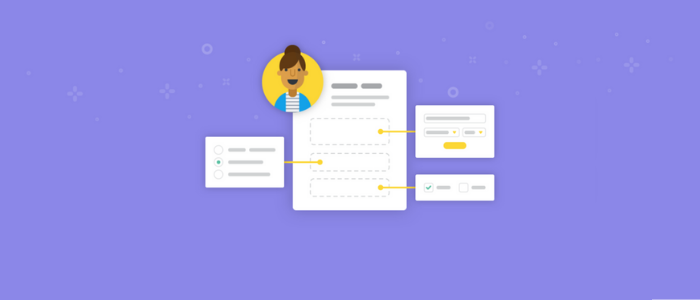It’s no surprise that most digital marketers are turning to personalization to up their email games. Although tactics like including a name in the subject line may increase opens, it’s not enough to stand out among your competitors, especially when so many brands are already practicing it. You must truly personalize emails with unique and valuable messaging.
How do you do that? By using quality customer data to build your email campaigns. And the first step is figuring out where you’ll get that data from.
Customer profile data tends to be some of the most accessible data for marketers and can create an immediate impact if used correctly. One of the easiest methods to build this profile data is through Progressive Profiling.
What is Progressive Profiling?
Progressive profiling is the practice of gathering information over time from a prospect or subscriber to build your user persona. This allows you to continuously collect deeper insights about a consumer while creating an engaging, interactive email experience that encourages subscribers to participate in your brand activity.
Two approaches to progressive profiling that are being used are,
1. Direct profiling requires asking a question within the email and making it possible for the reader to click on their desired answer. The answer clicked on is then systematically collected and the information is added to the subscriber’s profile.
2. Indirect profiling involves creating a link category for each link within the email and using click category information to indicate interest. Questions are not actually asked in this form of profiling.
So how do these strategies look in action?
Direct profiling:
The objective of direct profiling is two-fold: drive engagement and collect information that will help you to create more personalized emails in the future for the subscriber.
For example, if you’re in the travel industry, you can send an email asking your customer what kind of vacationer they are. Who doesn’t want to take a few minutes out of a busy workday to daydream about their perfect vacation? Then, follow up with personalized offers tailored to their vacation style that they’ll be more likely to engage with. The chances are high that they will take an action through your email.

Here, Tour Radar has tried to know the travel preferences of its subscribers and automated some follow up emails to send tour information suiting these preferences. So, for example – if a person has clicked on ‘Cultural’ he would receive the following email, and thus be more prone to book the tour he is likely to be interested in.

Indirect profiling:
The objective of indirect profiling is to boost conversion and revenue by using subscriber’s click behavior to determine eligibility to receive specific follow up campaigns about certain products or services. By consistently assigning link categories within promotional email campaigns, it allows the marketing team to easily identify what product category, brand, or other information that a subscriber is searching for.
Besiva, an e-commerce brand sent a welcome email with their discount offer as a ‘thank you’ for subscribing to their campaign. When the image was clicked, it navigated to their website but no action was further recorded on the website.

The click, however, triggered another follow-up email, which served as a reminder that there was an interest that was generated through an email in past. The reminder email consisted of the past product as well as the similar products which might regenerate the action or interest from the subscriber.

Automate your emails NOW to suit your customer’s needs, as you will be surprised at the response these targeted campaigns would generate for your business. Contact Juvlon to start with email automation for your brand, let us help you generate more customer value through exceptional email campaigns.

